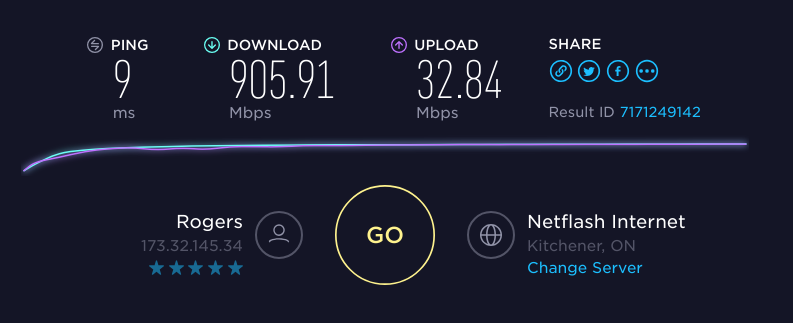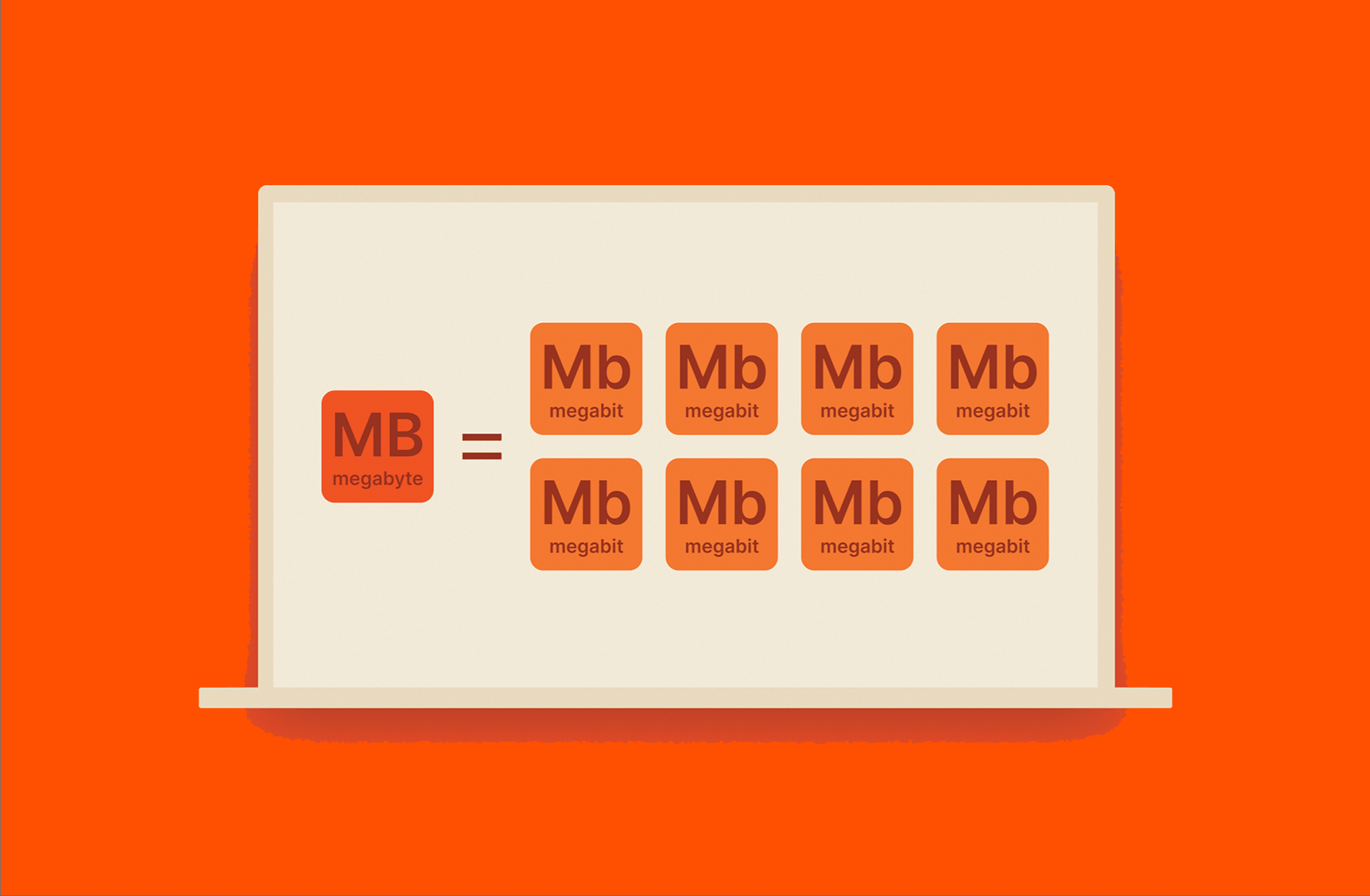Why Megabits Per Second Make A Difference for Remote Job Efficiency
How Megabits Per Second Effect Your Online Activities
The idea of megabits per second (Mbps) plays an essential function fit our on the internet experiences. As digital tasks proliferate, recognizing the implications of Mbps on streaming, gaming, and video clip conferencing comes to be increasingly vital. Higher Mbps can enhance efficiency and lower interruptions, while poor rates might promote disappointment and ineffectiveness. Examining your house's particular requirements in regard to these speeds is vital, particularly as several devices vie for data transfer. The nuances of exactly how Mbps impacts different online tasks call for additional exploration, particularly as our reliance on electronic connection proceeds to advance.
Recognizing Megabits Per Second
When considering web rate, it's important to comprehend the principle of megabits per second (Mbps), which offers as a basic dimension for data transfer prices. This metric measures just how much information can be sent over an internet link in one second, offering a clear understanding of performance abilities - Megabits Per Second. For context, one megabit is equal to one million bits, and Mbps is frequently utilized to share transmission capacity for numerous online tasks
A higher Mbps suggests a quicker internet link, making it possible for users to carry out tasks such as downloading documents, surfing websites, and participating in on the internet gaming much more effectively. Common surfing requires around 1-5 Mbps, while streaming high-def video clip might require 5-25 Mbps. Comprehending these requirements is crucial for determining the proper web speed required for certain activities.
Additionally, the number of gadgets linked to a network can influence general performance. Multiple customers streaming, video gaming, or downloading and install all at once can strain readily available data transfer, resulting in slower rates - Megabits Per Second. Examining personal online routines and requirements is essential in picking an internet plan that aligns with one's needs, making sure a smooth electronic experience
Streaming and Buffering Issues
Streaming high-def content has ended up being a staple of modern on the internet amusement, yet it is often gone along with by irritating buffering problems. These interruptions can considerably interfere with the seeing experience, bring about frustration and prospective loss of target market interaction. Buffering occurs when the data sent from the streaming solution is not gotten promptly sufficient to maintain a smooth playback, typically because of inadequate net speed gauged in megabits per second (Mbps)

Moreover, real-time streaming can be affected by network blockage, which takes place when several gadgets share the exact same bandwidth. Consequently, maximizing link rate and making sure adequate Mbps is crucial for a smooth streaming experience. As streaming solutions continue to progress, comprehending the effect of Mbps on buffering issues stays vital for customers looking for uninterrupted amusement.
Online Gaming Performance
The their explanation influence of web rate on online activities extends beyond streaming, significantly affecting on-line gaming performance. In competitive gaming, reduced latency and high data transfer are critical for a seamless experience. A rapid connection decreases lag, allowing gamers to respond promptly to in-game events, which can be the distinction between success and defeat.
Bandwidth, gauged in megabits per second (Mbps), plays an important function in supporting numerous devices and gaming systems concurrently. Inadequate transmission capacity can result in went down links or lowered game top quality, negatively affecting gameplay. As an example, online multiplayer games require substantial information transfer, specifically during peak pc gaming hours when many players are online.
Fast-paced first-person shooters demand greater rates to maintain responsiveness, while turn-based technique games might function fairly well on reduced speeds. As on the internet gaming continues to progress, with increasing visual fidelity and even more complicated multiplayer atmospheres, the need for higher Mbps will only intensify.
Video Clip Conferencing Quality
In today's digital landscape, video conferencing quality is greatly affected by net speed, specifically in regards to bandwidth and latency. Top notch video clip calls need enough bandwidth to transfer audio and video data effortlessly. Commonly, a minimum of 1.5 Mbps upload and download rates is recommended for basic definition video, while high-definition video conferencing usually demands at least 3 Mbps.
Latency, or the hold-up in between sending and getting information, additionally plays a critical duty in the individual experience. Low latency makes certain that discussions circulation normally without awkward stops briefly or disruptions. Preferably, latency should be below 150 nanoseconds for reliable interaction. Greater latency can bring about resemble, lag, and disjointed interactions, which can hinder collaboration and interaction during meetings.
In addition, several individuals in a video seminar can stress offered bandwidth, necessitating also greater rates. Network congestion, frequently brought on by simultaneous tasks like streaming or downloading, can even more break down video top quality. Hence, for organizations counting on video clip check my reference conferencing for remote partnership, comprehending the relationship in between megabits per overall and second communication quality is vital for maintaining productivity and improving digital communications.
Choosing the Right Net Plan
Picking a proper web strategy is essential for guaranteeing optimum efficiency in different on-line tasks, especially in settings that require high data transfer, such as video conferencing and online pc gaming. Megabits Per Second. When considering a net plan, it is important to examine both the speed and data allowance to match your particular usage needs
For homes with numerous customers participating in simultaneous activities, a plan supplying greater megabits per second (Mbps) is advised. Usually, a minimum of 25 Mbps is ideal for basic streaming and browsing, while plans going beyond 100 Mbps are preferable for more intensive jobs. In addition, consider the nature of your online activities; video conferencing requires at the very least 1.5 Mbps upload speed, while on the internet pc gaming might need a lower latency but consistent connection.
Endless information plans can protect against throttling and disruptions, especially if hefty usage is prepared for. By thoughtfully choosing an internet plan tailored to your needs, you can improve your on the internet experience, making sure smooth, continuous access to your site link preferred activities.
Verdict
To conclude, the relevance of megabits per second (Mbps) in shaping on-line activities can not be overstated. Higher Mbps promotes seamless streaming, lowers buffering, boosts pc gaming experiences, and ensures high-grade video conferencing. Conversely, poor transmission capacity can bring about irritating disturbances and lessened efficiency across various jobs. For that reason, an extensive understanding of individual or household Mbps needs is crucial for choosing a suitable internet strategy that effectively supports diverse online tasks and individual demands.

Usually, a minimum of 25 Mbps is appropriate for basic streaming and browsing, while plans exceeding 100 Mbps are better for even more intensive tasks. Additionally, think about the nature of your online tasks; video conferencing needs at least 1.5 Mbps publish rate, while on-line pc gaming may need a lower latency but regular link.